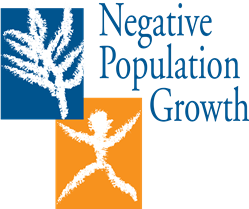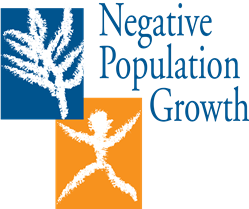
Years when the gag rule was in place saw a 40% increase in abortion in the countries analyzed. This increase was mirrored by a decline in the use of modern contraceptives and increased pregnancies.
ALEXANDRIA, Va. (PRWEB)
June 08, 2021
Soon after President Biden was sworn into office earlier this year, he signed the “Memorandum on Protecting Women’s Health at Home and Abroad,” which rescinded the Global Gage Rule (GGR). The executive order is a U.S. government policy that, when enacted, blocks U.S. federal funding for non-governmental organizations (NGOs) that provide information, referrals, or services for legal abortions or advocate for access to abortion services. Rescinding or restoring global funding for reproductive rights has been par for the course for United States Presidents since 1984 when President Ronald Reagan introduced it. Today, Negative Population Growth, Inc. (NPG) has published a new Forum paper discussing this policy, titled The Global Gag Rule: A Lesson in Unintended Consequences.
Author Edwin S. Rubenstein summarizes details of the GGR in his introduction, noting: “Implications of the GGR for global population growth are ambiguous. On the one hand, the goal of reducing abortion funding implies a desire to increase the number of live births, thereby increasing population growth. On the other hand, if GGR reduces support for family planning services, it could also lower access to modern contraception, thereby increasing unwanted pregnancies. This, in turn, could increase abortions because abortions and contraceptives are often seen as substitutes for each other.” Looking deeper into the consequences of GGR, Rubenstein turns his focus toward two studies that have quantified GGR’s impact on abortions, the Lancet Study and the Rutgers Study.
The 2019 Lancet Study consisted of researchers for The Lancet Global Health Journal studying data collected from sub-Saharan African countries during the Clinton, Bush, and Obama administrations. Rubenstein provides an overview of the results, sharing: “Years when the gag rule was in place saw a 40% increase in abortion in the countries analyzed. This increase was mirrored by a decline in the use of modern contraceptives and increased pregnancies.” The Rutgers Study, completed in 2018 by Professor Yana Rodgers, found that, “women in Latin America and Africa were up to three times more likely to have an abortion when the gag rule was in effect during President George W. Bush’s two terms than under the prior eight years of President Clinton.”
From its inception until 2017, GGR maintained its purpose, focusing solely on abortions. Rubenstein highlights changes made to the policy under President Trump, saying: “The rule was broadened to include foreign NGOs that distribute birth control or provide family planning services. Later that year, the rule was expanded…The new iteration affects health projects related to HIV/AIDS, nutrition, malaria, water and sanitation, tuberculosis, and other infectious diseases. These are basic public health issues unrelated to abortion and family planning.” The unintended result of pulling funding from NGOs which offer any type of abortion services or counseling actually led to an increase in abortions because access to modern contraceptives was cut off as well, leading to more unwanted pregnancies. In this section, Rubenstein also quotes Zara Ahmed of the Guttmacher Institute. After a thorough analysis of GGR, Ahmed states: “The global gag rule is bad public policy on every level.”
Undertaking the challenging question of how to undo the damage, Rubenstein lays out two points to be considered if history maintains its status quo: 1. Sluggish bureaucracies – government and NGO alike – are part of the problem, and 2. When the policy is reinstated, family planning organizations face a hard choice – comply with the policy and retain U.S. government assistance or maintain organizational goals that conflict with GGR policy and forgo government support. Rubenstein closes his work with both a suggested course of action and a warning: “The link between the gag rule and Presidential politics creates what one wag has called a ‘yo-yo effect,’ whereby the lives and health of women on one side of the world depend on who occupies the oval office. This is not the way public policy should be made. To cut the yo-yo strings, Congress should consider passing legislation impervious to Presidential politics. Until then, President Biden’s reversal of the gag rule is doomed to be just another short-term fix.”
Founded in 1972, NPG is a national nonprofit membership organization dedicated to educating the American public and political leaders regarding the damaging effects of population growth. We believe that our nation is already vastly overpopulated in terms of the long-range carrying capacity of its resources and environment. NPG advocates the adoption of its Proposed National Population Policy, with the goal of eventually stabilizing U.S. population at a sustainable level – far lower than today’s. We do not simply identify the problems – we propose solutions. For more information, visit our website at NPG.org, follow us on Facebook @NegativePopulationGrowth or follow us on Twitter @npg_org.
Share article on social media or email:

